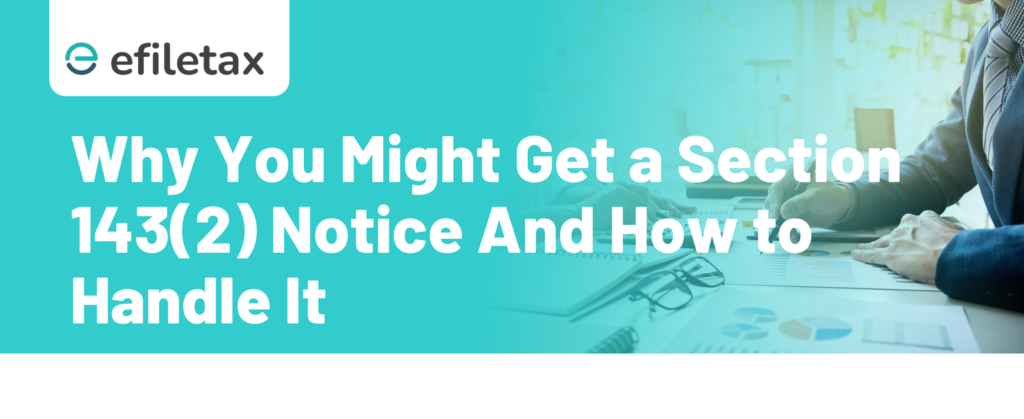
Understanding Section 143(2) Notice What Taxpayers Must Know
Section 143(2) notice is a powerful tool available to the Income Tax Department to initiate scrutiny assessment. Recently, the High Court reaffirmed that Income Tax Officers (like ACIT or DCIT) have jurisdiction to issue this notice, clarifying doubts around procedural authority.
If you’re a taxpayer or tax consultant in India, here’s everything you need to know about how Section 143(2) works, when it can be triggered, and your rights during the scrutiny process.
What is a Section 143(2) Notice?
A notice under Section 143(2) is issued when the Assessing Officer (AO) finds that the return filed by the taxpayer needs deeper examination. It marks the beginning of a scrutiny assessment.
Purpose:
- To ensure income is not understated
- To verify deductions and exemptions claimed
- To detect bogus or incorrect entries
Legal Basis: High Court Ruling on Jurisdiction
In a recent judgment, the High Court upheld the authority of the ACIT/DCIT to issue Section 143(2) notices, dismissing the taxpayer’s claim that only lower-ranking officers could issue such notices.
Case Source: Tax Management India Highlight
Relevance: Confirms broad discretionary power under Income-tax Act provisions, supporting departmental procedures.
Who Can Issue the Notice?
| Officer Rank | Can Issue 143(2) Notice? |
|---|---|
| ITO (Income Tax Officer) | ✅ Yes |
| ACIT/DCIT (Assistant/Deputy Commissioner) | ✅ Yes |
| AO with delegated powers | ✅ Yes |
This flexibility ensures faster scrutiny and wider coverage across taxpayer categories.
Timelines You Should Know
| Event | Time Limit |
|---|---|
| Issuance of 143(2) after ITR filed | Within 3 or 6 months (based on AY)* |
| Completion of assessment | Typically within 12 months |
*As per Section 143 and amended timelines from Finance Act, 2023
What Triggers a 143(2) Notice?
- Large or unusual refunds
- Mismatch between 26AS, AIS, TIS and ITR
- High-value transactions without PAN/TDS compliance
- Claiming excessive deductions under Chapter VI-A or capital gains
Be Prepared, Not Panicked
“Section 143(2) is not an accusation—it’s a check. Keep supporting documents ready and respond professionally. Filing accurate returns is the best defence.”
Steps to Respond to a 143(2) Notice
- Log in to the e-filing portal
- Go to “Pending Actions” → E-Proceedings
- Submit the required documents or clarification
- Track the status regularly
- Seek professional help if unsure
Efiletax Can Help
At Efiletax, we assist with:
- Drafting responses to Section 143(2) notices
- Representing clients before the AO
- Ensuring accurate documentation to reduce compliance stress
📎 Learn more about our Notice Management Services
FAQs on Section 143(2)
Q1. Can a notice be issued after return is processed under 143(1)?
Yes, if it’s within the prescribed time limit.
Q2. Is personal appearance mandatory?
Usually not, unless specifically called for. Most scrutiny today is faceless.
Q3. What if I ignore the notice?
Non-response may lead to best judgment assessment and heavy penalties.
Summary
Section 143(2) of the Income Tax Act allows Income Tax Officers like ACIT/DCIT to scrutinise tax returns. The High Court recently upheld their jurisdiction to issue such notices, ensuring wide compliance coverage. Responding correctly is critical to avoid penalties.
Final Word
Section 143(2) notice is a routine but serious step in the income tax process. With court backing for officer powers and digital assessments in place, taxpayers must maintain proper records and act swiftly on notices.